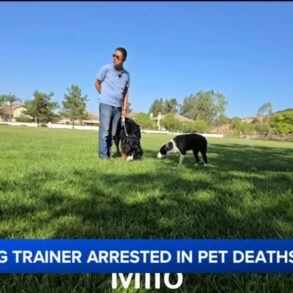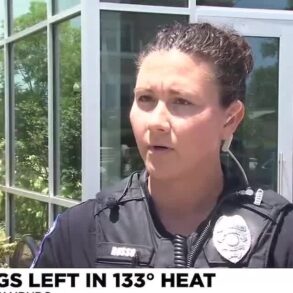In the past year, the Arizona Department of Public Safety has employed two dogs as a new resource to gather information in SWAT incidents. But instead of K-9 dogs, these are robot dogs.
DPS demonstrated the robot, along with other SWAT equipment, to a group of local high school students enrolled in the department’s STEM Training & Application in Real-World Public Safety, or STAR, program on Tuesday.
The robots, referred to as Spot, are able to replace humans or dogs to search dangerous situations without risking a life. They have several cameras and a microphone to give detectives an inside look at areas that are too risky to enter.
Each robot costs $235,949, DPS officials said.
During one Explosives Ordnance Department case, Detective Ricardo Montano used the robot to complete a perimeter check and discovered an ammo can. Using the robot, Montano knocked the can over, eliminating the risk of having a person open the unknown container.
What tricks does Spot know?
Each robot weighs approximately 80 pounds and is powered by a battery. One of the primary challenges of using the robots, Montano said, is the possibility of the battery overheating in Arizona weather.
A full battery can only last around an hour and half in high heat, Montano said.
The robots also have the ability to open doors and pick up or drag objects. This allows detectives to investigate suspicious objects or areas before entering a location.
One robot can lift or drag up to 25 pounds. It also has sensor technology that allows it to detect and adjust to obstacles in its path.
Both robot dogs were originally kept in Phoenix, but one has now been moved to Tucson to expand the reach of the resource. Before it expanded to Tucson, Montano was one of only two people in the Explosives Ordnance Department trained to control the robot.
“If we get calls that are from Phoenix north, somebody from up here can go,” Montano said. “Whereas if I was the only one that knows how to use it here, and something’s going down in Tucson, now I have to drive an additional two hours. Now it’s becoming a little bit more uniform, where everybody is getting more familiar with it.”
The robot is operated through a tablet-style controller where the user can see the camera feed and select actions for the robot to do. The official training is only one day, Montano said, and detectives spend significant time practicing to get a grasp of the tool.
STAR program connects youth to law enforcement training
The goal of the STAR program is to educate students interested in law enforcement and get them connected to the department and its internship program for potential careers.
“The last STAR program, I actually gained three interns from it,” said Veronica Valenzuela, the DPS Technical Services Division Administrative Supervisor. “It’s a great place for the students and youth to work and help them learn about our agency.”
On Tuesday, the students were also shown how traffic stops were handled, given a seatbelt safety demonstration, toured a SWAT vehicle and met a special response team dog.
Desert Edge High School graduate Warrick Byrd said he hadn’t been able to stop smiling during either of the program’s first two sessions.
“I’m trying to get general knowledge and experience,” Byrd said. “I’m thinking about becoming a trooper, and I knew this would be a really good way to know if it was for me or not.”
This post was originally published on this site be sure to check out more of their content.













































